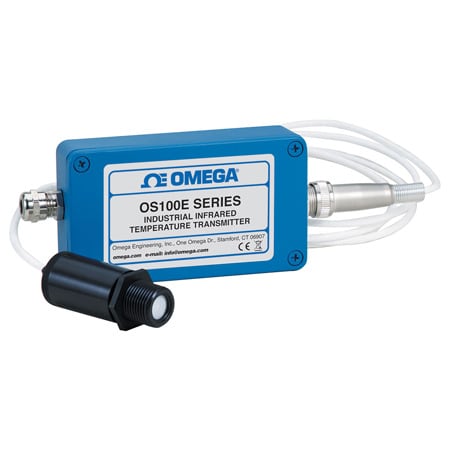Infrared (IR) thermometers are useful in measuring temperature across a range of industrial and clinical environments. These non-contact temperature measurement devices function well in circumstances where the object is fragile and dangerous to get near to, or when other kinds of thermometers are not practical.
Infrared thermometers utilize the concept of infrared radiation to determine the surface temperature of objects without any physical contact. Let's find out what infrared radiation is to get a better understanding of how IR thermometers work.
Infrared Radiation
Every object that is not in absolute zero temperature has atoms moving within it. This speed of movement is in direct correlation with its temperature. The higher the temperature, the faster will be the movement of molecules. These moving molecules emit energy in the form of infrared radiation.
The wavelength of this radiation is longer than those of visible light. Hence, we are not able to see it with naked eyes. However, the radiation can jump to the visible spectrum if the object gets too hot. A hot metal glowing red or sometimes even white is one of the examples.
While we may not be able to see infrared radiation, we can still sense it in the form of heat. The heat that we feel from sunlight, a radiator, or a fire are all examples of infrared radiation. It is this heat that the infrared thermometers detect to measure the temperature of objects.
Working of Infrared Thermometers
Similar to visible light, it is also possible to focus, reflect, or absorb infrared light. Infrared thermometers employ a lens to focus the infrared light emitting from the object onto a detector known as a thermopile.
The thermopile is nothing but thermocouples connected in series or parallel. When the infrared radiation falls on the thermopile surface, it gets absorbed and converts into heat. Voltage output is produced in proportion to the incident infrared energy. The detector uses this output to determine the temperature, which gets displayed on the screen.
While this entire process may sound complicated, it takes only a few seconds for the infrared thermometer to record the temperature and display in your desired unit.
Factors to Consider When Selecting IR Thermometer
Accuracy
The most crucial aspect of any thermometer is its accuracy. For infrared thermometers, the accuracy depends on its distance-to-spot ratio (D/S ratio). This ratio indicates the maximum distance from where the thermometer can evaluate a specific surface area. For example, if you need to measure the surface temperature of a 4-inch area with an IR thermometer that has a D/S ratio of 8:1, the maximum distance from where you can accurately record the temperature will be 32 inches (8:1 x 4). It means that with bigger ratios, you can measure the temperature from a farther distance. However, the surface area will also increase with increasing distance.
Emissivity
Emissivity shows how much infrared energy a thermometer can put out at a time. IR thermometers with emissivity closer to 1.00 can read more materials than those with lower emissivity value. Pick a thermometer that comes with an adjustable emissivity level to tweak the amount of infrared energy emitted and compensate for the energy reflected by the material in consideration for temperature measurement.
Temperature Range
An infrared thermometer's temperature range affects the work you can perform with it. You may want to get an IR thermometer with a wide temperature range to record various processes with different temperatures. On the contrary, an infrared thermometer with a narrow temperature range is better where higher resolutions are necessary to ensure proper temperature control of a specific process.
Reading Speed or Response Time
Reading speed is a time the thermometer takes to deliver an accurate reading after initiating the thermometer's reading process. This factor is essential when measuring the temperature of a moving object, or in cases where the objects heat up quickly.
Design
Industrial IR thermometers must have a rugged design. No-lens and Fresnel lens thermometers are durable due to their polymer structure, which keeps them safe. Whereas, tough Mica lens thermometers need a more durable shell and a carrying case implemented into their design to prevent the lens from cracking.
Backlit Display
A backlit screen makes it easier to read the thermometer even in adverse lighting conditions.
Warranty
Warranty is a must-have feature in thermometers, as they are fragile or may even turn out to be defective. No-lens and Fresnel thermometers are cheaper than Mica lens thermometers, which can be a pretty massive investment. If you are buying any expensive thermometer, get the one that comes with a manufacturer's warranty.
Infrared thermometers are essential to use while reading the temperature of a surface that's too dangerous, and almost impossible to reach. With the complex inner workings process, these thermometers give rapid results and are simple to use. However, before picking an IR thermometer, try to figure out the temperature range and your application. Also, make sure to use the device correctly and at the right place to get accurate results.


